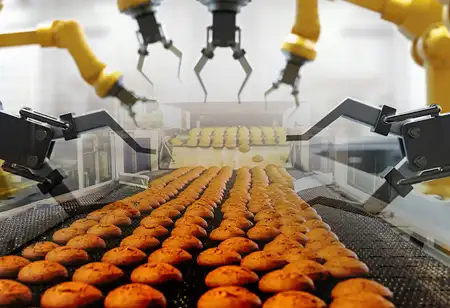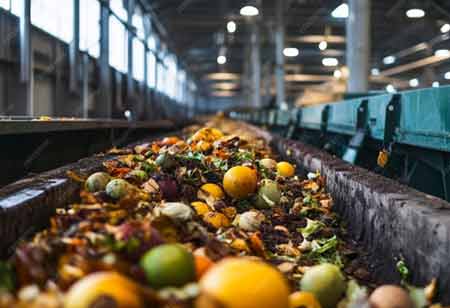THANK YOU FOR SUBSCRIBING
Be first to read the latest tech news, Industry Leader's Insights, and CIO interviews of medium and large enterprises exclusively from Food and Beverage Tech Review
Food Preservation Technologies Extend Shelf Life
It can be difficult to keep up with new technologies, especially ones that have not yet seen widespread adoption.

By
Food and Beverages Tech Review | Monday, May 29, 2023
Stay ahead of the industry with exclusive feature stories on the top companies, expert insights and the latest news delivered straight to your inbox. Subscribe today.
To preserve food safely, freezing, disinfection, drying, and authentication-inducing techniques contribute to killing as many bacteria on or around it as possible through a process that does not alter it in any way.
FREMONT, CA: It can be difficult to keep up with new technologies, especially ones that have not yet seen widespread adoption. Emerging technologies can enhance some of the most fundamental processes used in food processing.
Conventional freezing has two drawbacks: it is expensive and frequently results in product changes. A possible workaround for both is isochoric freezing. Simply defined, the procedure is placing food within a rigid container, either bare or enclosed in a flexible material, filling the container with water, and then freezing it. All but around 10 percent of the water within the container is prevented from freezing by the pressure inside.
Since the meal doesn't freeze, crystallization's cellular harm is avoided. One of the main benefits of isochoric freezing is that it may be carried out using standard freezing devices. In addition to increasing preservation quality, using an isochoric system to preserve food rather than freezing leads to significant energy savings because freezing requires a significant amount of energy for just a tiny portion of the volume. This is accomplished by storing food in an isochoric chamber rather than in the open air without altering the refrigeration system.
This makes preserving foods that can't be frozen possible since freezing includes the production of ice crystals inside the food. Still, during isochoric preservation, the ice crystals either form outside the food or don't form. The only significant modification would be using hard containers rather than putting food items directly through a freezer. The largest obstacle to commercialization is that isochoric preservation necessitates a shift in how we think about food storage at low temperatures.
Many bacteria on or surrounding food must be eliminated by a procedure that causes the least amount of modification to the food to securely preserve it. Atmospheric plasma has been used as one approach to do this. The air between two parallel electric diodes becomes mainly ionized, used in high-voltage atmospheric cold plasma (HVACP). Electric fields have biocidal qualities, and the gases that come from them (such as ozone, nitric oxides, peroxides, and atomic oxygen) may also break down harmful microbiological products like mycotoxins to make them harmless. Various items, such as meat, potatoes, nutraceuticals, seeds, flour mills, nut foods, peanuts, hazelnuts, row crops, pet food, fusible flax, and animal feed mills, might be treated with HVACP. HVACP is only the tip of the iceberg in terms of commercialization. Making it work on a scale that matters, obtaining FDA clearance, connecting a market to a problem, and addressing it effectively and economically are all factors in commercialization. Ionized air is used in electrohydrodynamic drying (EHD), similar to HVACP. Passing electricity via two electrodes placed on either side of the food to be dried generates an ionic wind. Food dries more quickly using ionic wind than traditional convective drying, partly because the process produces heat.
EHD drying is a non-thermal, extremely energy-efficient technique that can dry heat-sensitive materials using little energy. Studies have demonstrated that items dried using EHD is more energy-efficient and preserve their color, taste, and nutritional value better than traditional ones, with lesser shrinkage and higher rehydration capability. The method has primarily been used for fruits and vegetables up to this point, but there is promise for other goods and other businesses, such as medicines.
As a result of its inability to attain the fan-driven conventional systems' airflow rates, EHD is better suited for small- to medium-sized batches. The largest obstacle to the widespread use of this green technology in this form of drying is EHD's compatibility with the production line and with current values and norms, such as production rate. Farmers utilizing EHD for field drying would be one exciting prospective use. Many governments in developing countries are ready to fund the installation of solar panels to power a field EHD system since energy usage is so minimal.
I agree We use cookies on this website to enhance your user experience. By clicking any link on this page you are giving your consent for us to set cookies. More info







